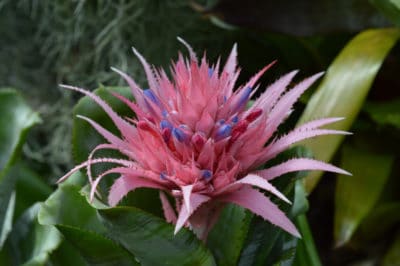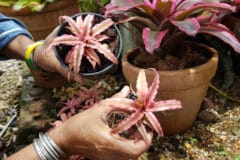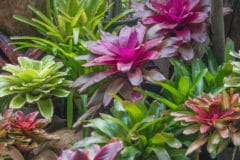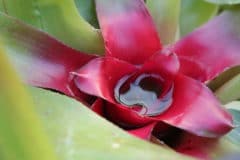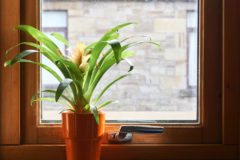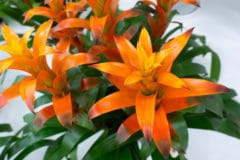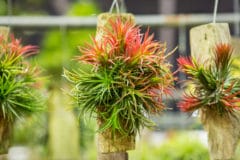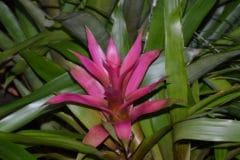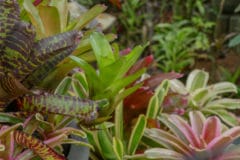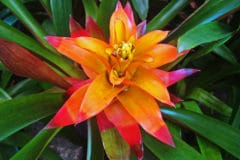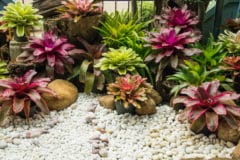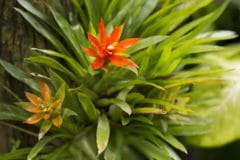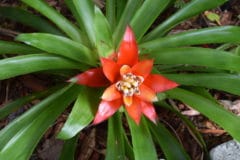Factors Influencing Bloom
Like any plant, bromeliads need the right cultural conditions in order to bloom. Natives of tropical and subtropical habitats, they need similar conditions in cultivation. However, this huge group comes from many different locations and may need variations in soil, temperature, light, fertilizer or humidity. Finally, the plant must be mature to bloom – at least two years and often considerably more.
Frequency and Length
Bromeliads bloom only once and then begin to produce the offsets known as pups in order to reproduce. However, the leaves of some varieties such as neoregelias (blushing bromeliads) turn bright red or pink prior to bloom. In these plants, the actual flowers are insignificant. For most bromeliads in cultivation, the inflorescence (stalk) and flowers will last about three to six months.
Colors of Bloom
You can find a bromeliad flower in nearly any color except black. In addition to flowers of green, orange, red, pink, purple, silver, white and yellow, some bromeliad flowers are variegated. The inflorescence, a bract of leaves that may look like a flower, may also be colored and very different from the flowers themselves. In many cases the flowers are inconspicuous and the “bloom” is actually the inflorescence.
Notable Bromeliads
These bromeliads are highly attractive:
- Vriesea splendens – flaming sword; two foot, bright red inflorescence with small yellow flowers and variegated foliage banded with maroon.
- Aechmea fasciata – silver vase plant; light pink inflorescence with darker pink or purple flowers.
- Bilbergia nutans – queen’s tears, for nectar that drips from blue flowers with yellow stamens.
- Tillandsia bulbosa – a bulbous base with bright red bracts, tubular purple flowers and twisting leaves.
Forcing Bloom
If all other conditions are right – growing conditions and plant maturity – you can sometimes force a bromeliad to bloom by supplying ethylene gas. Place a ripe apple next to the plant and cover both plant and apple with a plastic bag for about seven to 10 days. Make sure to dump tank bromeliads first to prevent rot. Most plants will bloom within six to 12 weeks.
Indoors vs. Outdoors
Some bromeliads can be grown outdoors in USDA Zones 9 and above. It is often more difficult to get indoor bromeliads to bloom because it is harder to mimic their natural environments. In addition, commercial growers often sell the plants in a blooming stage, and the plants will not rebloom. Many people grow them in pots outdoors and only bring them in for winter.
